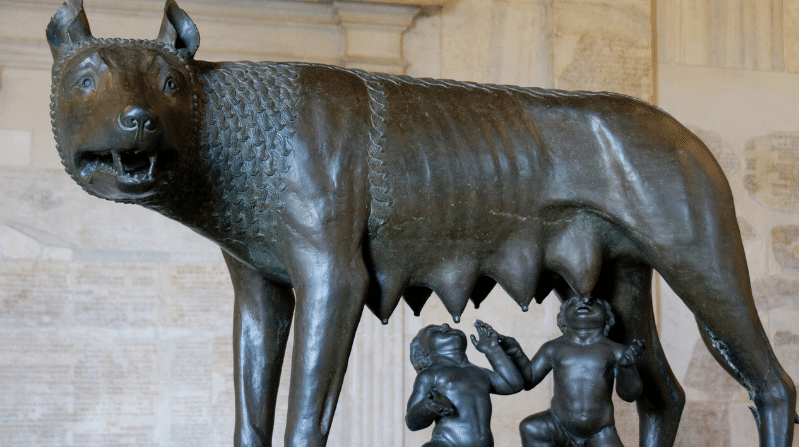Rome, the Eternal City, stands as a living testament to centuries of art, culture, and history. For travelers seeking to immerse themselves in this rich tapestry, the Top 5 Art Museums in Rome You Must Visit offer an unparalleled journey through time. This guide will take you through five must-visit museums, each offering a unique window into the city’s artistic heritage. Whether you’re a seasoned art enthusiast or a curious novice, these cultural landmarks promise to leave you awe-inspired and enlightened, showcasing the best of Rome’s artistic treasures.
Introduction: Rome’s Cultural Tapestry
Rome’s allure for history and art lovers is undeniable. The city breathes history from every cobblestone and corner, with millennia of human creativity on display. For any Italy travel itinerary, museum-hopping in Rome isn’t just an option—it’s essential. These institutions house some of the world’s most significant artistic and historical treasures, offering visitors a chance to walk through time and experience the evolution of human expression.
“Rome is not like any other city. It’s a big museum, a living room that shall be crossed on one’s toes.” – Alberto Sordi
As you plan your Roman holiday, consider these museums as portals to different eras, each telling a unique story of Rome’s place in the grand narrative of human civilization.
Vatican Museums: A Journey Through Time and Faith

The Vatican Museums stand as a testament to the Catholic Church’s long-standing patronage of the arts. Housing one of the world’s most extensive collections, these museums offer a journey through time that’s nothing short of awe-inspiring.
The Sistine Chapel: Michelangelo’s Heavenly Masterpiece

At the heart of the Vatican Museums lies the Sistine Chapel, Michelangelo’s crowning achievement. This architectural and artistic marvel took four years to complete (1508-1512) and covers over 5,000 square feet of ceiling.
Key Facts:
- Commissioned by: Pope Julius II
- Number of individual frescoes: 9 central panels
- Most famous scenes: The Creation of Adam, The Last Judgment
The chapel’s intricate frescoes depict biblical stories with unparalleled detail and emotion. Michelangelo’s innovative use of perspective and his portrayal of the human form revolutionized Western art.
Raphael Rooms: Renaissance Splendor Brought to Life

Adjacent to the Sistine Chapel, the Raphael Rooms showcase the genius of another Renaissance master. These four rooms, painted by Raphael and his workshop between 1508 and 1524, represent the pinnacle of High Renaissance artistry.
Must-See Works:
- The School of Athens
- The Parnassus
- The Disputation of the Holy Sacrament
Each room tells a complex story through allegory and historical figures, blending classical and Christian themes seamlessly.
You Might Also Like https://gazetravels.com/best-time-to-experience-the-louvre-museum/
Ancient Sculpture Collections: A Walk with the Gods
The Vatican Museums house an impressive collection of classical sculptures, offering visitors a chance to meet the gods and heroes of antiquity.

Notable Sculptures:
- Laocoön and His Sons
- Apollo Belvedere
- Belvedere Torso
These sculptures have inspired artists for centuries and continue to captivate visitors with their beauty and technical mastery.
Smart Travel Tip: Beating the Crowds at the Vatican
To make the most of your visit:
- Book tickets online in advance
- Opt for early morning or late afternoon entry
- Consider a guided tour for deeper insights and skip-the-line access
Galleria Borghese: Baroque Brilliance in a Villa Setting

Nestled in the lush Borghese Gardens, the Galleria Borghese offers an intimate encounter with some of the most exquisite works of the Renaissance and Baroque periods.
Bernini’s Sculptural Marvels: Stone Turned to Flesh

Gian Lorenzo Bernini, the master of Baroque sculpture, is showcased brilliantly at the Galleria Borghese. His ability to capture movement and emotion in marble is unparalleled.
Must-See Bernini Sculptures:
- Apollo and Daphne
- The Rape of Proserpina
- David
These works demonstrate Bernini’s incredible skill in transforming cold marble into seemingly living, breathing figures.
Caravaggio’s Dramatic Paintings: Light and Shadow Personified

The Galleria houses several masterpieces by Caravaggio, the revolutionary painter known for his dramatic use of chiaroscuro.
Key Caravaggio Works:
- Boy with a Basket of Fruit
- David with the Head of Goliath
- Saint Jerome Writing
Caravaggio’s paintings are characterized by their intense realism and emotional impact, often depicting biblical scenes with startling immediacy.
The Villa’s Opulent Architecture: A Museum Within a Museum

The Galleria Borghese isn’t just a container for art—it’s a work of art itself. Built in the early 17th century, the villa’s lavish interiors complement the artwork perfectly.
Architectural Highlights:
- Frescoed ceilings
- Intricate mosaic floors
- Ornate furnishings
Savvy Travel Advice: Navigating the Reservation System
The Galleria Borghese operates on a strict reservation system:
- Book your time slot well in advance, especially during peak season
- Arrive 30 minutes before your scheduled entry
- Be prepared to check large bags and backpacks
Capitoline Museums: Where Ancient Rome Comes Alive

Perched atop the Capitoline Hill, the Capitoline Museums offer a deep dive into ancient Roman history and art.
Marcus Aurelius and the Capitoline Wolf: Iconic Symbols of Rome
Two of Rome’s most recognizable symbols reside here:
- The Equestrian Statue of Marcus Aurelius
- Date: 175 AD
- Significance: One of the few surviving bronze statues from antiquity

2. The Capitoline Wolf

- Date: 5th century BC (wolf), 15th century AD (twins)
- Significance: Legendary symbol of Rome’s founding
You Might Also Like https://gazetravels.com/best-holiday-destinations-december/
Palace of the Conservators: Renaissance Art in a Historic Setting

This wing of the museum houses an impressive collection of Renaissance and medieval art.
Notable Works:
- Paintings by Caravaggio, Titian, and Rubens
- Ancient Roman statuary and inscriptions
- The original bronze She-Wolf statue
Palazzo Nuovo: A Treasure Trove of Greek and Roman Sculptures

Across the piazza, the Palazzo Nuovo showcases an extensive collection of classical sculpture.
Highlights:
- The Dying Gaul
- Cupid and Psyche
- Bust of Commodus as Hercules
Travel Smarter: Combining Your Visit with Forum Exploration
For a comprehensive Roman experience:
- Start your day at the Capitoline Museums
- Take in the panoramic views of the Roman Forum
- Descend to explore the Forum itself
Palazzo Massimo alle Terme: The Hidden Gem of Roman History

Often overlooked by tourists, Palazzo Massimo alle Terme houses some of Rome’s most impressive ancient art collections.
Frescoes from Villa of Livia: Step into a Roman Garden

One of the museum’s highlights is a reconstructed room from the Villa of Livia, featuring stunning garden frescoes.
Key Features:
- 360-degree painted garden landscape
- Incredible detail of flora and fauna
- Insight into ancient Roman villa decoration
Ancient Roman Coins and Jewelry: Everyday Luxury of the Past

The museum’s numismatic collection is one of the world’s finest, offering a glimpse into the economic and social history of Rome.
Collection Highlights:
- Gold coins from various emperors
- Intricate jewelry pieces
- Ceremonial silverware
The Boxer at Rest: A Bronze Masterpiece That Stops You in Your Tracks

This Hellenistic bronze statue is a tour de force of ancient sculpture.
Facts about The Boxer at Rest:
- Date: 1st century BC
- Discovery: Found on the Quirinal Hill in 1885
- Unique Features: Realistic depiction of a battered boxer, including cauliflower ears and facial scars
Intelligent Travel: Why This Often-Overlooked Museum Deserves Your Time
To make the most of your visit:
- Allocate at least 2-3 hours for exploration
- Use the audio guide for in-depth information
- Visit early in the day to avoid school groups
MAXXI: Rome’s Bold Leap into Contemporary Art

The MAXXI (National Museum of 21st Century Arts) represents Rome’s commitment to contemporary art and architecture.
You Might Also Like https://gazetravels.com/20-ways-experience-nashville-june/
Zaha Hadid’s Architectural Wonder: A Modern Marvel in the Ancient City

The building itself, designed by Zaha Hadid, is a masterpiece of contemporary architecture.
Architectural Features:
- Flowing, curved lines
- Innovative use of concrete and glass
- Integration of natural light
Cutting-Edge Exhibitions: Italy’s Pulse on the Global Art Scene
MAXXI hosts rotating exhibitions featuring both Italian and international contemporary artists.
Types of Exhibitions:
- Large-scale installations
- Multimedia presentations
- Performance art events
Events and Workshops: Engaging with Art in New Ways

MAXXI offers various programs to engage visitors:
- Artist talks
- Film screenings
- Interactive workshops for children and adults
Clever Travel: Balancing the Old and New in Your Rome Itinerary

Incorporating MAXXI into your Rome visit:
- Use it as a palate cleanser after days of ancient art
- Combine with a visit to the nearby Auditorium Parco della Musica
- Explore the surrounding Flaminio neighborhood for a taste of modern Roman life
Practical Tips for the Art-Loving Traveler
Roma Pass: Weighing the Benefits for Museum Enthusiasts
The Roma Pass can offer significant savings and convenience:
| Pass Duration | Cost | Includes |
|---|---|---|
| 48 hours | €32 | Free entry to 1 museum |
| 72 hours | €52 | Free entry to 2 museums |
Both passes include free public transportation and discounts on other attractions.
Best Times to Visit: Dodging Crowds and Maximizing Experiences
- Vatican Museums: Tuesday and Thursday afternoons
- Galleria Borghese: First thing in the morning
- Capitoline Museums: Weekday afternoons
- Palazzo Massimo: Anytime, as it’s less crowded
- MAXXI: Saturday evenings for a lively atmosphere
Guided Tours vs. Self-Guided Adventures: Choosing Your Path
Guided Tours:
- Pros: In-depth information, skip-the-line access
- Cons: Less flexibility, potentially rushed
Self-Guided:
- Pros: Move at your own pace, focus on your interests
- Cons: May miss out on hidden stories and context
Nearby Attractions: Crafting the Perfect Roman Holiday
For each museum, consider nearby sites to create a themed day:
- Vatican Museums → St. Peter’s Basilica
- Galleria Borghese → Villa Borghese Gardens
- Capitoline Museums → Roman Forum and Colosseum
- Palazzo Massimo → Baths of Diocletian
- MAXXI → Foro Italico (Fascist-era sports complex)
Conclusion: The Evolving Canvas of Rome
Rome’s museums offer a journey through time, from ancient sculptures to contemporary installations. They reflect not just the city’s artistic journey, but the evolution of human creativity and expression.
As you explore these institutions, you’ll find that Rome is more than just a city of ruins and relics. It’s a living, breathing epicenter of art and culture, where the past and present coexist in fascinating ways.
You Might Also Like https://gazetravels.com/iberian-peninsula-morocco-ultimate-2024-travel-guide/
Your Roman Adventure Awaits
Ready to embark on your artistic odyssey through Rome? Here’s how to stay connected and informed:
- Subscribe to our newsletter for more Italy travel tips and in-depth guides.
- Share your own museum experiences in the comments below—we’d love to hear about your favorite discoveries!
- Explore our other articles on Italian travel and art history for more inspiration.
Remember, every visit to Rome is a chance to write your own chapter in the city’s long and storied history. So pack your curiosity, wear comfortable shoes, and prepare to be amazed by the artistic treasures that await you in the Eternal City.
Q: What are the best times to visit Rome’s popular museums to avoid crowds?
A: Visit the Vatican Museums on Tuesday or Thursday afternoons. For other museums, early mornings or late afternoons on weekdays are generally less crowded. Always book tickets in advance.
Q: Is the Roma Pass worth it for visiting museums in Rome?
A: It’s worth it if you plan to visit at least two major sites and use public transport frequently. However, it doesn’t include the Vatican Museums, so consider your itinerary carefully.
Q: How should I dress when visiting Rome’s museums, especially religious sites?
A: For religious sites like the Vatican, cover shoulders and knees. For other museums, smart casual is fine. Always wear comfortable shoes for walking.

Luna Smith is the experienced blogger behind Gaze Travels. With a passion for exploring new destinations and sharing travel tips, Luna brings her firsthand experiences and insights to every post, helping readers plan their adventures with confidence and ease

